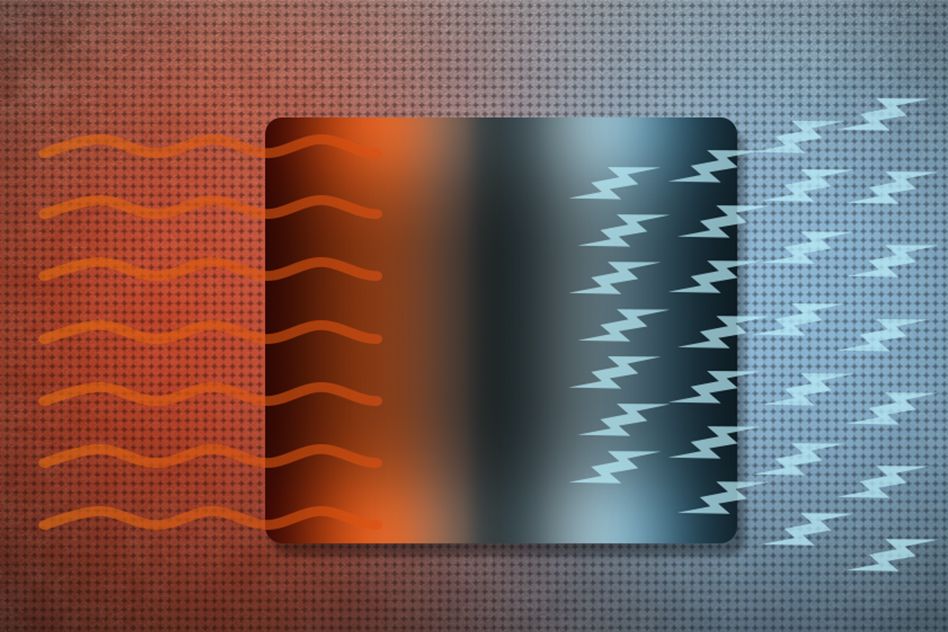
**Transforming Waste Heat into Energy: A Major Advancement in Transverse Thermoelectrics**
The waste heat produced by engines, industrial systems, and manufacturing operations represents an overlooked asset with substantial potential for energy recovery. Across various sectors, from vehicles to power generation, vast amounts of heat energy—worth billions—are released into the environment each year. To efficiently harness and redirect this energy, researchers have consistently sought out thermoelectric materials. These substances facilitate the direct conversion of heat into electrical energy, presenting a clean and scalable avenue for enhancing energy efficiency. Nevertheless, current technologies encounter notable hurdles, such as intricacy and efficiency losses.
A pioneering study, featured in *PRX Energy*, reveals a new methodology for thermoelectric conversion that could transform waste heat utilization. Researchers from the Tokyo University of Science have showcased the application of an exceptional material—tungsten disilicide (WSi₂)—to produce electricity **perpendicular to the thermal flow**. This innovative mechanism, termed **transverse thermoelectric conversion**, presents significant benefits over traditional approaches and could enable advancements in utilizing waste heat across various applications.
—
### **Understanding Conventional Thermoelectric Devices**
Conventional thermoelectric devices function based on the Seebeck effect principle. In traditional configurations, a temperature disparity between two areas in a material prompts charge carriers (electrons or holes) to migrate from the heated side to the cooler side, generating voltage that corresponds with heat movement. To boost their efficiency, standard thermoelectric devices typically incorporate multiple materials arranged in series. Although effective, such connections introduce practical challenges, including heightened electrical resistance, reduced efficiency, and more complex manufacturing processes.
### **What Distinguishes Transverse Thermoelectrics?**
The primary innovation in this research addresses these challenges directly. Rather than generating voltage parallel to the heat flow, the transverse thermoelectric effect produces voltage **perpendicularly**. This occurrence simplifies device design by potentially removing the need for complex material junctions and lowering electrical resistance.
“Transverse thermoelectric conversion is gaining traction as a novel core technology for sensors designed to gauge temperature and heat flow,” remarked Associate Professor Ryuji Okazaki, the lead investigator. Nonetheless, he highlighted the limited availability of materials that can achieve this effect and the absence of well-defined design protocols. Through their use of tungsten disilicide, the research team has made a significant stride in demonstrating the viability of this unconventional method.
### **Tungsten Disilicide: The Essential Component of the Breakthrough**
The selection of tungsten disilicide (WSi₂) was crucial to the success of the research team. WSi₂ is categorized as a **semimetal**, possessing electronic properties that lie between those of metals and semiconductors. Its **distinctive electronic structure** is particularly noteworthy, as it allows charge carriers (electrons and holes) to maneuver in various dimensions. This atypical characteristic enables the material to exhibit a transverse thermoelectric effect when heat travels through it in a particular direction.
By conducting a blend of laboratory experiments and computational simulations, the researchers found that WSi₂ produces substantial voltage perpendicular to heat flow. This finding underscores WSi₂’s potential as a prominent candidate for practical transverse thermoelectric devices.
—
### **Significance for Energy Efficiency**
The ramifications of this advancement are considerable:
1. **Enhanced Efficiency with Reduced Complexity**: By generating electricity at right angles to heat flow, the transverse thermoelectric effect obviates the need for numerous material interfaces, thereby decreasing electrical resistance and boosting overall efficiency.
2. **Wide-Ranging Applications**: Transverse thermoelectric devices may be employed to harness waste heat from engines, industrial furnaces, and even electronic equipment. They could also function as sophisticated sensors for temperature and heat flow measurements in various scientific and engineering scenarios.
3. **Sustainability in Energy Frameworks**: As the global energy landscape shifts toward more sustainable solutions, technologies that reclaim and transform waste energy will be crucial in mitigating environmental consequences.
—
### **Future Directions**
Despite its promise, the research remains in the early phases. The efficiency and practical scalability of devices developed from this technology still need thorough evaluation. Furthermore, researchers intend to investigate additional materials exhibiting similar transverse effects with the aim of further elevating efficiency and broadening application prospects.
The ultimate goal? To create a future where heat designated to be discarded becomes a precious resource—powering sensors, devices, and systems while decreasing our dependence on traditional energy sources.
—
### **Key Terms Glossary**
– **Thermoelectric Conversion**: The direct transformation of heat energy into electrical energy through temperature gradients.
– **Semimetal**: A classification of materials possessing electrical properties that are intermediate between those found in metals and semiconductors, often characterized by unusual charge carrier dynamics.
– **Transverse Effect**: A phenomenon where the output (such as voltage) is generated at right angles to the input (like heat flow).
—
### **Why Tungsten Dis